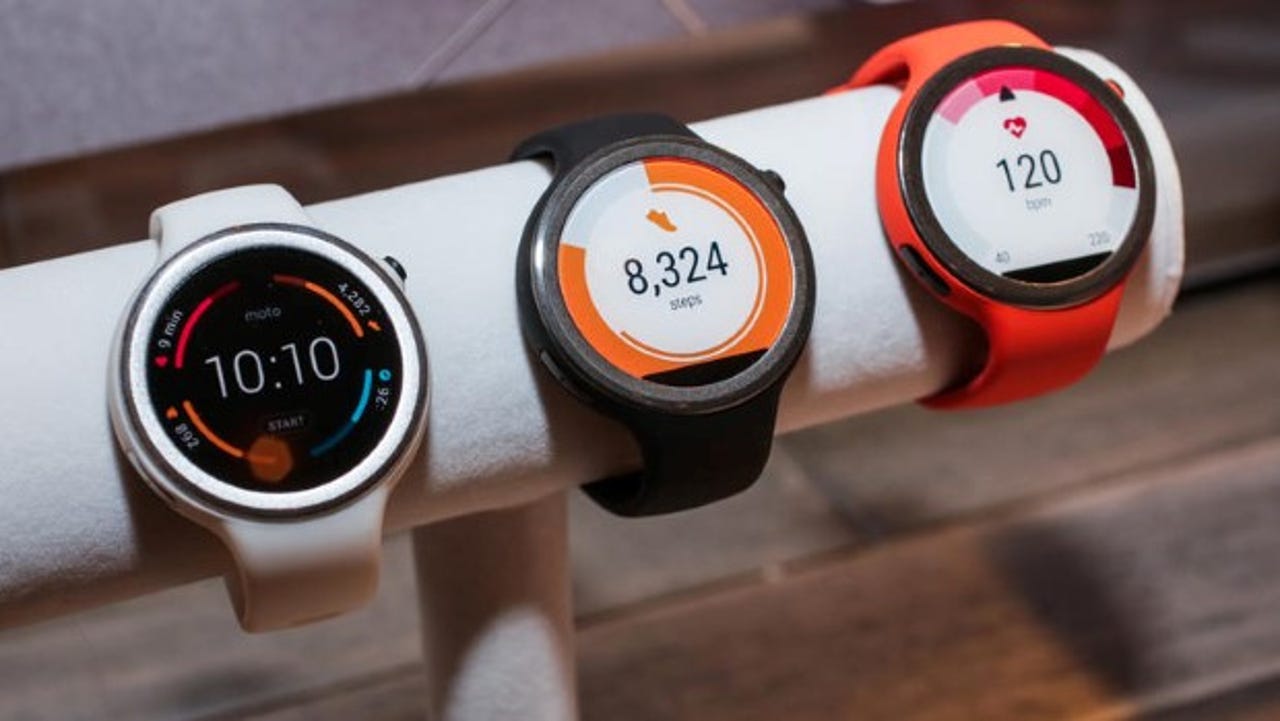First impressions of the Moto 360 Sport fitness-focused Android Wear smartwatch

I'm pleased there are so many new fitness-focused wearables during this time of year as their release helps motivate me to get out and move. After posting my review of the Samsung Gear S2 3G yesterday and continuing to work on my Microsoft Band 2 review, a new Moto 360 Sport arrived for evaluation.
First run results
After unboxing and charging up the white Moto 360 Sport, I secured it to my left wrist along with the Band 2 while mounting the Gear S2 and a Polar V800 on my right wrist. I then put on my headlamp and headed out into the night for a short 3.3 mile run around the neighborhood.
The table below shows my results from this first test run with several more runs planned before posting my full review of the Moto 360 Sport and Microsoft Band 2. The Polar V800 sets the standard for GPS accuracy and is used as the standard to measure all of the other results.
I haven't had good luck getting the Microsoft Band 2 to acquire a GPS signal so the data for that device is based on movement and not GPS. In addition, the S Health automatically captures movement even when it is not selected as the GPS app so the data for S Health also does not include GPS data.
| Wearable | Application | Distance (miles) | Pace (min) | HR (bpm) | Calories |
| Gear S2 | Nike+ | 3.31 | 10:11 | 148 | 613 |
| Gear S2 | S Health | 3.32 | 9:22 | -- | 665 |
| MS Band 2 | MS Health | 3.39 | 9:52 | 150 | 664 |
| Moto 360 Sport | Moto Body | 3.27 | 10:14 | 154 | 351 |
| Polar V800 | Polar Flow | 3.29 | 9:59 | -- | 528 |
As you can see, the Moto 360 Sport did a solid job of tracking my run, although the calories burned was quite a bit lower. The display looked great as I ran and was easy to flip for more information.
Hardware
The Moto 360 Sport is quite a bit different than the standard Moto 360 2015 Edition. The silicone band is integrated and not changeable on the Moto 360 Sport. While the band is very pliable, it's also a major lint magnet. This makes the white one look pretty terrible after just a short time and I don't think I would ever pick up this color.
The internals are the same as the Moto 360 42mm model, with the addition of a GPS receiver. The display uses a new Motorola AnyLight Hybrid Display technology that adapts to your environment. It functions as a traditional backlit display in low light and then as a front-lit reflective display in sunlight. I ran at night and the backlighting looked great in the dark.
It has the same flat tire on the front of the display, but that honestly has never bothered me so I am not concerned with that. Around the display you will find a metal bezel, split into a polished inner part and outer textured finish. I tried spinning the bezel after using the Gear S2 for 10 days, but it is stationary.
There is an extended black button, with texture on the end, located on the upper right side. The mic is located on the lower left side. An optical heart rate monitor is positioned on the center of the back. Charging is performed wirelessly on a dock, just like the Moto 360.
Moto 360 Sport image gallery
Software
The Moto 360 Sport runs Android Wear 1.3.0.x, based on Android 5.1.1. So far it has performed flawlessly.
Motorola included a few fitness focused apps and a fitness watch face. Apps include Moto Body and Moto Body Running. The watchface, called Sport, reminds me of the old Simon game with four color quadrants providing status on the display and a tap to access more. You can view your heart rate, step goal status, seconds (and access the stopwatch), and calories burned status.
There is a Start button near the middle of the display that launches the Moto Body Running app where you can select different options to get started on your run.
Testing plans
I've only spent a few hours with the Moto 360 Sport so far and as a result there is a ton left to evaluate. Here is what I plan to test and if you have anything further please leave a comment.
- Documenting what displays are available to you as you run
- Performance on a run while playing music stored on the device to a Bluetooth headset
- Using another Android Wear running app, such as RunKeeper
- Other Moto Body statistics
- Ability to connect to other services and export run data
- Performance as an Android Wear smartwatch
